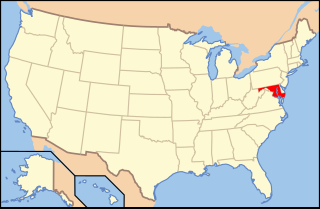
The National Firearms Act (NFA), 73rd Congress, Sess. 2, ch. 757, 48 Stat. 1236 was enacted on June 26, 1934, and currently codified and amended as I.R.C. ch. 53. The law is an Act of Congress in the United States that, in general, imposes an excise tax on the manufacture and transfer of certain firearms and mandates the registration of those firearms. The NFA is also referred to as Title II of the federal firearms laws, with the Gun Control Act of 1968 ("GCA") as Title I.

In firearms terminology and at law, the firearm frame or receiver is the part of a firearm which integrates other components by providing housing for internal action components such as the hammer, bolt or breechblock, firing pin and extractor, and has threaded interfaces for externally attaching ("receiving") components such as the barrel, stock, trigger mechanism and iron/optical sights. Some firearm designs, such as the AR-15 platform, feature receivers that have 2 separate sub-assemblies called the upper receiver which houses the barrel/trunnion, bolt components etc and the lower receiver that holds the fire control group, pistol grip, selector, stock etc.

A Firearms Transaction Record, or ATF Form 4473, is a seven-page form prescribed by the Bureau of Alcohol, Tobacco, Firearms and Explosives (ATF) required to be completed when a person proposes to purchase a firearm from a Federal Firearms License (FFL) holder, such as a gun dealer.

Bump stocks or bump fire stocks are gun stocks that can be used to assist in bump firing, the act of using the recoil of a semi-automatic firearm to fire cartridges in rapid succession.
In the United States, the right to keep and bear arms is modulated by a variety of state and federal statutes. These laws generally regulate the manufacture, trade, possession, transfer, record keeping, transport, and destruction of firearms, ammunition, and firearms accessories. They are enforced by state, local and the federal agencies which include the Bureau of Alcohol, Tobacco, Firearms and Explosives (ATF).

Gun laws in California regulate the sale, possession, and use of firearms and ammunition in the state of California in the United States.

Reed Charles O'Connor is a United States district judge of the United States District Court for the Northern District of Texas. He was nominated by President George W. Bush in 2007.

Gun laws in the District of Columbia regulate the sale, possession, and use of firearms and ammunition in Washington, D.C.

Gun laws in Illinois regulate the sale, possession, and use of firearms and ammunition in the state of Illinois in the United States.

Gun laws in Maryland regulate the sale, possession, and use of firearms and ammunition in the U.S. state of Maryland.

Defense Distributed is an online, open-source hardware and software organization that develops digital schematics of firearms in CAD files, or "wiki weapons", that may be downloaded from the Internet and used in 3D printing or CNC milling applications. Among the organization's goals is to develop and freely publish firearms-related design schematics that can be downloaded and reproduced by anyone with a 3D printer or milling machine, facilitating the popular production of homemade firearms.

A 3D printed firearm is a firearm that is partially or primarily produced with a 3D printer. While plastic printed firearms are associated with improvised firearms, or the politics of gun control, digitally-produced metal firearms are more associated with commercial manufacturing or experiments in traditional firearms design.

A homemade firearm, also called a ghost gun or privately made firearm, is a firearm made by a private individual, in contrast to one produced by a corporate or government entity. The term ghost gun is used mostly in the United States by gun control advocates, but it is being adopted by gun rights advocates and the firearm industry.
Cedar Point Nursery v. Hassid, 594 U.S. ___ (2021), was a United States Supreme Court case involving eminent domain and labor relations. In its decision, the Court held that a regulation made pursuant to the California Agricultural Labor Relations Act that required agricultural employers to allow labor organizers to regularly access their property for the purposes of union recruitment constituted a per se taking under the Fifth Amendment. Consequently, the regulation may not be enforced unless “just compensation” is provided to the employers.
New York State Rifle & Pistol Association, Inc. v. Bruen, 597 U.S. 1 (2022), abbreviated NYSRPA v. Bruen and also known as NYSRPA II or Bruen to distinguish it from the 2020 case, is a landmark decision of the United States Supreme Court related to the Second Amendment to the United States Constitution. The case concerned the constitutionality of the 1911 Sullivan Act, a New York State law requiring applicants for a pistol concealed carry license to show "proper cause", or a special need distinguishable from that of the general public, in their application.

Miller v. Bonta is a pending court case before Judge Roger Benitez of the U.S. District Court for the Southern District of California concerning California's assault weapon ban, the Roberti–Roos Assault Weapons Control Act of 1989 (AWCA). Judge Roger Benitez struck down the ban in a ruling on June 5, 2021. A three-judge panel of the Ninth Circuit issued a stay of the ruling on June 21, 2021, which left the ban in place as appeals were litigated. The panel then vacated Judge Benitez's ruling and remanded it back down after was decided. The case was known as Miller v. Becerra before Rob Bonta succeeded Xavier Becerra as Attorney General of California in April 2021.
Garland v. Cargill, 602 U.S. 406 (2024), was a United States Supreme Court case regarding the classification of bump stocks as "machine guns" under the National Firearms Act of 1934 (NFA) by the United States Bureau of Alcohol, Tobacco, Firearms and Explosives (ATF) in 2018. In a 6-3 decision, the Supreme Court ruled that bump stocks are not machine guns for purposes of the NFA, vacating the ATF rule and finding that the ATF exceeded its statutory authority.
United States v. Rahimi, 602 U.S. ___ (2024), was a United States Supreme Court case regarding the Second Amendment to the United States Constitution and whether it empowers the government to prohibit firearm possession by a person with a civil domestic violence restraining order in the absence of a corresponding criminal domestic violence conviction or charge.

The Firearms Policy Coalition (FPC) is a gun rights organization in the United States, which aims to advance gun rights in the United States via legal action, in keeping with its stated goal to "restore the essential right to keep and bear arms in the United States." The FPC seeks to approach gun rights advocacy in a more targeted and effective way than the National Rifle Association of America (NRA), specifically by working with targeted legal teams to advance legislation in support of gun rights causes.
The Emily and the Caroline, 22 U.S. 381 (1824), is a United States Supreme Court case in which the Court held that in admiralty law, indictments require less formality and technical precision than common law indictments. Additionally, the Supreme Court expressed an anti-circumvention principle for statutory interpretation, in which laws should be read in ways that do not undermine their purpose.














